This Post May Contain Affiliate Links. Please Read Our Disclosure Policy.
Whether you’re Whole30-curious, planning your first round, or are a Whole30 vet looking to pick up a few new skills for your next bout, this article covers everything you’d ever want to know about the Whole30 diet! From info about the Whole30 diet itself to pantry and fridge staples, my favorite Whole30 recipes, and FAQs, it’s all here.
All About the Whole30 Diet

When you ask me, “What is the Whole30 diet?” my response might be a little different than what you were expecting. Here goes:
It’s a 30-day elimination diet that totally transformed my life and my husband’s life. It got rid of my persistent TMJ, took my sleep from awake-every-dang-hour to a scene out of a Disney princess movie (You know, stretching blissfully with birds tweeting around your well-rested face and perfectly coiffed, um, coif), and helped me shed those stubborn last few pounds of baby weight. It gave me energy that was almost annoying – stable and constant throughout the day, absolutely unaffected by the common “2:30 slump,” and left me feeling light and healthy and happy and pain-free.
So, that’s me. And, running a Whole30 Support Group on Facebook with thousands of members, I know I’m not alone. I see this over and over: amazing results that would shock anyone, after simply 30 days of deliberately eliminating known allergenic, inflammatory, and generally troublesome foods and breaking the (unhealthy) emotional relationship we so often have with food.
But what is the Whole30 diet, really?
The Whole30 diet is a 30-day elimination diet designed to help you identify inflammatory, allergenic, or intolerable foods for your own body. It’s a month-long program during which you focus entirely on real, whole foods and avoid all added sugars (Even maple syrup, honey, etc.), as well as “healthified” recreations of baked goods like bread, pancakes, or tortillas. You eat three meals a day, avoid snacking, and you don’t weigh yourself, either.
The aim is to reset your body physically by removing foods that are commonly difficult on our systems to process; you follow the 30 days with a deliberate reintroduction plan to identify which foods are well-tolerated by your system and which aren’t.
And there’s another important goal: to reset your emotional relationship to food by removing those common indulgences like baked goods, junk food, and alcohol. You’re forced to find healthy ways to administer self-care and deal with stress, rather than just diving into a bag of cookies and washing it all down with a couple glasses of Sauvignon Blanc. Like… for example. Asking for a friend.
Here are the details:
What can you eat on the Whole30 diet?
This is what I like to focus on: what you can eat on the Whole30 diet. Check out my Whole30 food list post, which includes a free downloadable and printable guide, as well as a wallet-sized version you can keep with you at all times!
Another pro tip: Thrive Market makes it much easier to follow the Whole30 diet, but more on that later on (CLIFFHANGER!).
Here are the Whole30-compliant foods:
- Meat
- Poultry
- Seafood
- Eggs
- Vegetables
- Fruit
- Natural fats and oils (Limit your use of safflower, sunflower, canola, grapeseed, and sesame. See the next section for off-limits oils!)*
- Ghee
- Potatoes: Sweet and white are OK
- Coffee
- Vinegar*
- Fruit juices as sweeteners – limited
- Spices and seasonings
- Green beans, sugar snap peas, snow peas*
*Each of these categories includes exceptions. Check out the next section for details.
What can you not eat on the Whole30 diet?
- Dairy
- Added sugars, in any form (including maple syrup, honey, and coconut sugar)
- Sweeteners, like stevia or monkfruit
- Grains, like rice, oats, or wheat
- Pseudo-grains, like quinoa
- Seed oils, like corn oil, rice bran oil, soybean oil, and peanut oil
- Gluten
- Alcohol at all, even in cooking (including most Dijon mustards* and vanilla extract)
- Legumes, including peanuts, corn, lentils, chickpeas, and green peas. Exceptions are sugar snap peas, snow peas which are more pod than bean.
- Soy
- Commercially produced chips, even if they’re made with compliant ingredients, like plantain chips
- Junk food, even if it’s technically “compliant” – read more in the SWYPO section
- “Paleo-ified” versions of baked goods and treats – read more in the SWYPO section
- MSG
- Sulfites
- Carageenan
Check out my Whole30 food list post and downloadable guide for the nitty gritty details on other names for sugar and additives that are and are not compliant.
*Thrive Market produces a Whole30-compliant Dijon mustard that I love, as does Annie’s. Neither includes no white wine or sugar. Pick some up!
What to do with your coffee?
OK, so you can have coffee, but by now you know you can’t have dairy or sugar, so creamer, even plain ol’ organic half-and-half, is out. What’s a coffee addict to do? There are a couple options:
- Buy Whole30-approved creamer
- Make Whole30-approved creamer
- Coconut cream
- Almond milk (Eh.)
Buy Whole30-Approved Creamer
Ding ding ding – this is the best solution in my opinion. We use both Califia Unsweetened Almond Milk Creamer, which is just positively delicious and creamy. And we use Nutpods, too, which has a fab variety of flavors, like French Vanilla and Hazelnut. You can order either from Thrive Market, and I can find Nutpods at my local Kroger and Califia at Sprouts or Whole Foods.
Make Whole30-Approved Creamer
I have a fantastic recipe for Whole30 pumpkin spice creamer, which you should definitely try. You can leave out the pumpkin purée and pumpkin spice for a plain creamer.
Alternately, try this super easy Whole30 creamer recipe: Whisk together one can of full-fat coconut milk, about 1/2 teaspoon of cinnamon, and about 1/2-1 cup of almond milk, depending on thickness preference. Whisk very, very well and keep in a mason jar. Shake vigorously before serving, as the cinnamon will settle. So good and so easy!
Coconut Cream
Some people spoon coconut cream from a can of coconut milk or cream into their coffee for a super easy creaminess option in your coffee. Keep a can on hand for this purpose!
Almond Milk
Eh. Just don’t, unless you have nothing else on hand. Just don’t. Don’t make your coffee sad!
Paleo vs. Whole30: What’s the difference?
There are a couple primary differences when it comes to paleo vs. Whole30.
Timeline:
Eating a paleo diet is a long-term shift in your way of thinking and what you eat (and what you avoid), whereas a Whole30 is a 30-day reset for your body and mind. The Whole30 is not intended to be long-term and offers what Melissa Hartwig calls “food freedom” after you finish a round. That means the guilt-free, emotionally-unmotivated long-term eating you’ll follow after you finish a Whole30.
You’ll eat the foods that work for you and leave the rest. You won’t be tied to psychological comfort wrapped up in food but will be deliberate in your choices. You’ll eat food because it makes you feel good, not to feel good in that moment.
The Foods:
A paleo diet typically focuses on:
- Poultry, grassfed meat, seafood, eggs
- Veggies
- Fruits
- Nuts
- Healthy fats
- Natural, less refined sugars like maple syrup, raw honey, and coconut sugar
- And baked goods/junk food made with those ingredients are OK in moderation
A paleo diet typically avoids:
- Conventional dairy, though many paleo eaters will consume cultured or raw dairy (Hello!)
- Grains, including oats, rice, and wheat
- Legumes, including soy, corn, peas, beans, etc.
- Refined sugar
- Additives and preservatives, when possible
On a paleo diet, alcohol is OK. Obviously, you’ll want to be very moderate with your consumption, but wine especially works on a paleo diet.
So the main differences when it comes to paleo vs. Whole30 foods are sugars, baked goods, alcohol, and potentially dairy. I personally follow a fairly flexible paleo diet and will eat rice on occasion, lentils here and there, etc. I also typically eat some cultured or raw dairy when my gut is in good shape.
I do a Whole30 when I need that reset, either physically or mentally… or both! I know it’s just for 30 days – I couldn’t do it otherwise! And then I transition into a paleo diet after that.
What can you expect on the Whole30 diet?
The Whole30 diet timeline is beautifully documented over at the official Whole30 site, and I highly recommend you follow along with that as you do your round. You’ll start by feeling like, “Wahoo! This is easy,” to, “Um, is literally nothing compliant?” to, “Why do I feel so bad,” to, “SO THIS IS TIGER BLOOD?!”
There will be times when you want to quit, and those times very often line up with the times when everyone else wants to quit. The timeline knows all! Seriously, though, it’s super helpful to know that what you’re feeling is a normal part of a normal round, and that you’ll get through it.
Check out the Whole30 timeline here.
I also highly recommend picking up a hard copy of The Whole30 Day Day by Day: Your Daily Guide to Whole30 Success. It covers the program basics as well, but most importantly, it accompanies you in the trenches day by day. I wish they’d had this when I did my first round, and all I can say now is: Get it!
What benefits can you expect from the Whole30 diet?
Here’s what happened to me after my first round: my persistent and painful TMJ went away, my sleep went from broken and restless to closing my eyes at night and then only opening them again with my alarm, and I lost that stubborn baby weight. My husband’s sleep did the same, he lost a ridiculous amount of weight, and he shaved a minute off his marathon pace. A minute! And this man was running fast already.
OK, so that’s us. But what about others? Here’s a non-comprehensive list of ailments that others have said the Whole30 either vastly improved or eradicated. Literally eradicated. Of course, you’ll want to talk to your doctor about how a Whole30 fits in with your treatment plan, but check this out!
- high blood pressure
- high cholesterol
- type 1 diabetes
- type 2 diabetes
- asthma
- allergies
- sinus infections
- hives
- skin conditions
- endometriosis
- PCOS
- infertility
- migraines
- depression
- bipolar disorder
- heartburn
- GERD
- arthritis
- joint pain
- ADD
- thyroid dysfunction
- Lyme disease
- fibromyalgia
- chronic fatigue
- lupus
- leaky gut syndrome
- Crohn’s
- IBS
- Celiac disease
- diverticulitis
- ulcerative colitis
Presented without comment.
Just kidding; here’s my comment. That is amazing. And I personally see it on a daily basis, this unbelievable healing that happens when we focus on whole, healthy foods, remove what might be harming us, and break our emotional dependencies on food. Give yourself 30 days; at worst, you just ate a veritable ton of veggies.
Don’t weigh yourself!
Back. Away. From. The. Scale.
I’m a daily weigher (I know), so this is hard for me. But you know what? It’s a Whole30 rule. Yep! It’s actually a rule of the Whole30 to not weigh yourself. Here’s the reasoning:
First of all, the goal of the Whole30 diet is not to lose weight. It’s to reset your body and your emotional relationship with food, to identify the optimal diet for your own physiological composition. It’s not a diet like Weight Watchers or Atkins. It’s not even a regular, ol’ “this is what we eat” diet; it’s a short-term elimination diet with greater goals in mind.
But when you weigh yourself, you’re either very consciously or subconsciously weaving in weight loss with your program. And you’ll be consciously or subconsciously evaluating the efficacy of the program accordingly. The interesting part?
I’ve done subsequent rounds and weighed myself as a sort of test. I’d lose weight early on, plateau or even gain weight back, and then lose a lot at the end. Huh?!
So if I were new to the program and focusing on weight loss, weighing myself regularly, I’d likely quit during the plateau/weight gain time, should that happen to me. See where we’re going with this?
Weight loss is not the goal. So integrating a tool for weight loss analysis not only complicates the process, it refocuses the goal entirely.
If you weigh yourself, it’s not exactly grounds for starting over, like eating a piece of toast would be. But seriously: don’t do it.
What are non-scale victories (NSV)?
So don’t weigh yourself; I got it. But eventually you will weigh yourself, around day 31 or so, and you’ll likely see a smaller number on the scale than when you started. That’s awesome! And that’s the most common way our society evaluates health and ways of eating.
But there are dozens and dozens – actually over 100 – other ways of evaluating your Whole30. These are called non-scale victories, or NSVs, and they represent qualitative benefits or improvements to your health and happiness as a result of your Whole30 diet. Examples include:
- clearer skin
- sustained energy
- clothes fitting better
- mental clarity
- improved mood / improvement in depression
- no cravings for sweets after dinner
The Official Whole30 site has a wonderful checklist of potential NSVs that can help you identify physical and mental improvements as a result of a Whole30. Check it out!
What’s the deal with SWYPO (sex with your pants on)?
The Whole30 refers to eating “compliant” paleo-ified treats and baked goods as “sex with your pants on,” or SWYPO. It’s like, well, having sex with your pants on: good… but not that good. Although I’m not sure you can actually really have sex with your pants on and if it’s even good at all, but that’s beside the point. Here’s how I see it:
It’s like white knuckling it through your junk food and baked goods addiction.
You’re trying to just survive until you can have treats again. Rather than breaking the damn addiction and freeing yourself from the constant cravings, emotional binging, and need for treats.
So no, you can’t have the pancakes. We don’t care that they’re just made with bananas and eggs! They’re a stand-in for “real” pancakes.
However, this area, as I’m sure you can assume, gets tricky. The reality is this:
Recreation = no.
Making buns for your burger out of cauliflower pulp and cassava flour = white-knuckling it until you can have “real” buns again.
Substitution = yes.
Here you’re eating iceberg shells in place of burger buns. You’re not trying to pull one over on yourself and trick your brain into thinking you’re having fluffy, gluten-y buns. Your brain is like, yeah, this is crunchy iceberg, I got it.
Certain recipes can be easily made Whole30 and you’re not missing out at all, like replacing the breading on chicken nuggets or chicken fingers with coconut flour or almond flour. Those are OK!
There’s a caveat here, though:
If you’re coming off a real “addiction” to a certain type of food, you probably don’t want to “Whole30 it.” An example is fried chicken: you can totally make a Whole30 fried chicken, but if you’re a recovering KFC addict, it’s probably best to avoid it. Makes sense, right?
Except it does get totally confusing. I like to ask myself this question: Is this me just white-knuckling it and trying to trick myself into lasting the 30 days? Or is this a totally satisfying real food version (pants-off sex) of something I love? If it’s the former, I skip it. If it’s the latter, I’m all about it. And even then, I try to keep it minimal, interspersing my fried chicken with more straightforward dishes like my Whole30 egg roll in a bowl or a simple seared steak with a sweet potato and roasted Brussels sprouts. Got it?
Sweet. We’ve just had “the talk.” I wish your father had been in charge of that one.
Is the Whole30 diet a real diet?
Not really, not in the way that we think of “diets.” Rather, it’s an elimination diet for a short period of time, after which you’ll modify your diet (Meaning what you eat, not what you’re doing to lose weight) for the long-term. The goal of the Whole30 is not to lose weight, thought that will likely be a side effect.
It really grinds my gears (#imsoold) when people refer to the Whole30 diet as a sort of fad diet with the goal of losing weight. That’s absolutely not what it is! It’s a deliberate removal of inflammatory and allergenic foods with the aim of identifying what works for your body and what doesn’t. It’s only thirty days and is truly a tool to help you optimize your health.

Everything You Need to Rock It
Whole30 grocery list
Stocking your pantry and fridge before starting a Whole30 is so critical to your success in the program. If you find yourself hungry and pressed for time, you’re way more likely to just say “Screw it” and eat whatever you happen to find around. Instead, prep! Here are my pantry and fridge must-haves for the Whole30 diet:
- Full-fat coconut milk and coconut cream
- Rxbars (for emergencies, like when you’re stuck somewhere and can’t get a real meal)
- Epic Bars (same deal as above)
- LaCroix or other flavored sparkling water
- Coconut aminos
- Epic Uncured Bacon bites
- Red Boat fish sauce
- Compliant Dijon mustard
- Arrowroot powder or cassava flour for thickening sauces
- Canned or bagged seafood, like tuna, crab, anchovies, sardines, and salmon
- Salsa
- Marinara sauce
- Chicken and beef stock or bone broth
- Light-tasting olive oil
- Avocado oil
- Olive oil
- Coconut oil
- Ghee
- Primal Kitchen Avocado Oil Mayo, for emergencies (This is a thing. Trust me. Otherwise, I love love love to make my Immersion Blender One Minute Mayo)
- Primal Kitchen salad dressings
- Nut butters
And, of course, you’ll want to stock your fridge with plenty of:
- Good-quality poultry and meat. I love ordering the organic chicken, pasture-raised pork, and grass-fed beef from Thrive Market.
- Fresh and frozen seafood. <<< Another Thrive love here!
- Whole30 diet-compliant sausages, like Aidell’s chicken and apple sausage or other brands. I’ve tried several varieties from Casual Gourmet; frying up a couple links makes an easy dinner or lunch).
- Big bags of produce, like broccoli florets, cut kale, brussels sprouts, etc. So easy to sauté up or roast in the oven for a quick lunch or dinner.
- Frozen veggies so you always have some plant-y goodness on hand.
- Nutpods or Califia Almond Milk Creamer Unsweetened. We prefer the Califia to Nutpods personally, but most people I know are Nutpods fanatics.
- Prosciutto. I’m just gonna leave it at that. Don’t skimp on the prosciutto.
- Loads of organic eggs
- Some fruit. Don’t go wild and have a crate of mangos around just staring at you like, “If you eat 20 of me, that’s FIFTY-SIX grams of protein!“
- Unsweetened almond milk
- Compliant bacon, like Pederson’s Farms
How to Make the Whole30 Even Easier
My favorite thing to ever happen to the Whole30 diet is Thrive Market! You can go shop all around your town for that pantry list above, or you can click a few things on your phone and have your Whole30 diet must-haves delivered to your doorstep. This seems like a trick question, but which would you rather do? I’m all about the laziness. Hey, I’ll be meal prepping enough to make up for it!
Better yet — Thrive Market’s inventory is categorized by diet or lifestyle. Yup, you guessed it — including Whole30. Literally with the click of a button, you can short by all Whole30 Approved items that are sold on Thrive Market. Melissa Hartwig (yes, the Melissa Hartwig) curated these products just for you. Oh, and did I forget to mention that the prices on these items are 25-50% lower than retail price? It’s not too good to be true, trust me.
I value being a Thrive Market member for their highly curated catalog of products, the prices, and how they believe in making healthy living easy and affordable for everyone. I’m sure you’re feeling obligated to learn more (which you should) — check out their website, their deals, and everything Thrive Market by clicking here. Plus, you’ll get a special gift from me (because I like you and I like Thrive Market).
Whole30 Thrive Market Must-Haves
- Coconut Aminos
- Cassava Flour
- Almond Flour
- Coconut Flour
- Avocado Oil
- Raw Cashews
- Safe Catch Cajun Canned Tuna
- Safe Catch Garlic Herb Tuna
- Ranch dressing
- Anchovies
- Ketchup
- BBQ Sauce
- Yai’s Thai Almond Sauce
- Caesar Dressing with Avocado Oil
- Garlic Aioli Mayo
- Primal Palate Taco Seasoning
- Medium Buffalo Sauce
- Primal Palate Super Gyro Seasoning
- Primal Palate Garlic & Herb Seasoning
- Mushroom Chicken Bone Broth
- Garlic Herb Canned Wild Tuna
- Dijon Mustard
Eating out on the Whole30 Diet
Eating out on the Whole30 diet can be difficult, but it’s actually easier than you’d think. There is a lot to cover, and I talk a ton about it in my Total Whole30 Guide, which you can download for free by signing up for my mailing list!
However, here’s a quick overview:
- If you can, opt for restaurants you know offer Whole30-friendly dishes. At Chipotle, for example, you can ask for a carnitas burrito bowl with no rice or beans, add lots of guac and salsas. Tada! Totally compliant. And stop looking at those tortilla chips…
- Focus on whole foods that you know are compliant, like steak, guacamole (but not “guacamole dip” like you find at some taquerias. This has loads of crema in it! I totally found out the hard way: stomach cramps for days. Well, not days, but they were still damn awful.), sweet potatoes, veggies, etc. Ask for no cheese, ask what sort of oil it’s cooked in, etc. Don’t make a big fuss about it and usually things will go pretty smoothly! That’s not to say you shouldn’t be very clear about what you can’t eat, but you don’t have to launch into a whole rhetoric about non-scale victories and pantsless sex!
- Understand that your friends or coworkers are going to give you hell about it. They just are! Embody the shrug emoji and feel that Tiger Blood pumping, my friend.
Easy Whole30 Meal Ideas
You probably won’t always feel like cooking up a new recipe, and that’s a good thing! It’s great to be able to throw together easy but healthy and super flavorful meals easily; this skill will allow you to maintain whole-foods-focused eating in the long run.
Make sure you always follow the suggested Whole30 diet meal template: include veggies at every meal, as well as protein, and go easy on the fruit. When you eat a salad, make sure you include plenty of sturdier veggies, since lettuce, cooked down, is pretty minimal. You can even eat your salads with a side of veggies like broccoli or a starch like sweet potato, if they aren’t loaded up with those super sturdy veg.
Here are some easy Whole30 meal ideas:
Easy Breakfast Ideas (Including Breakfast Veggies!)
- Scrambled eggs in ghee
- Fried eggs in more ghee with compliant hot sauce (or my Whole30 sriracha)
- Sweet potato home fries fried in coconut oil
- Crisp bacon
- Sautéed spinach
- Slices of ripe tomatoes with olive oil, salt, and pepper
- Baked acorn squash with ghee and cinnamon^
- A steamed sweet potato topped with a poached egg
- Sauerkraut
- Sliced avocado with Tajin and lime juice
- Carrots roasted with coconut aminos
Easy Lunch Ideas
- Lettuce wraps with turkey, bacon, tomato, and Whole30 mayo
- Tuna salad over lettuce
- Aidell’s chicken and apple sausages (or other compliant sausages) fried up and dipped in whole grain mustard or dump ranch
- Crab salad (a can of crab + mayo + a squeeze of lemon + salt and pepper) stuffed into avocado halves
- A big salad with lots of veggies and a can of salmon
- Easy eggs in purgatory: heat compliant salsa in a skillet over medium-low heat
- Burger patties (from frozen is great) cooked in a skillet, topped with guacamole and bacon
- Frozen broccoli tossed in olive oil and your favorite seasoning blend, roasted at 425º F for about 25-30 minutes
- “Lunchable”: prosciutto, hard or soft boiled eggs, nuts, olives, a handful of berries, and a veggie on the side
- Leftovers! I mean, hey!
Easy Dinner Ideas
- Seared steak with chimichurri
- Skinny chicken fingers: cut chicken breasts into strips and cook in a little avocado oil over medium heat. Serve with dump ranch
- Shrimp scampi: sauté garlic in a little olive oil then add shrimp and a squeeze of lemon juice. Serve over zoodles
- Sauté scallops in a little ghee over medium-high heat until a beautiful golden brown crust forms on the bottom. Flip and repeat, making sure you don’t overcook. Serve with mashed cauliflower
- Roast a couple handfuls of butternut squash cubes and shaved Brussels sprouts. Massage some Caesar dressing into sliced dinosaur (lacinto) kale. Toss the roasted veggies with the kale and top with sliced, cooked chicken breast
- Sear thick pork chops in a bit of avocado oil in a cast-iron skillet over medium high heat. Serve with roasted red potatoes and sautéed kale
What should portions look like on the Whole30 diet?
Good question! It’s important to not go view the Whole30 diet as carte blanche to eat 100% bacon for every meal. Here’s what your Whole30 diet portions (and proportions) should look like:
- Eat moderate amounts of meat, seafood, and eggs.
- Eat loads of veggies. I don’t think you can overdo it here, really!
- Eat some fruit. You want to be careful to not essentially replace your sugar addiction with loads of mango here. Eat fruit but not too much. Focus on veggies.
- Consume plenty of healthy fats, like coconut oil, ghee, and olive oil.
- Season your food liberally with herbs and spices. Don’t be afraid of salt, especially sea salt, Himalayan pink salt, or Celtic grey salt.
Whole30 Meal Template
When it comes to portions in a meal, nothing can explain the breakdown better than this awesome guide from Whole30 themselves. I especially love the non-food-specific guidelines surrounding mealtime: sit down to eat, turn off the TV, and chew your food!
Keep this Whole30 meal template guide handy throughout your round and reference it often.
What to eat before and after a workout?
That Whole30 meal template that illustrates food portions also covers what to eat before and after a workout. Make sure you follow these guidelines
Nuts = fat source, not protein
It’s important to note that nuts should be seen as a fat source, not a protein. So don’t think you can get away with calling your apple and almond butter a meal – it’s not!
Finding a Support Group
I’ll be honest: doing the Whole30 diet is hard. It’s not like, swimming the English Channel hard, but it is hard. And it’s easier with a support group! I highly recommend you do your first round (or every round, ideally) with a buddy and preferably your partner, but joining an online support group can be immensely helpful, too. You’re able to crowdsource answers, info, and troubleshoot issues you’re having.
My Facebook Whole30 Support Group is welcome to all and is super supportive. Join!
Reintroductions
After 30 days of the Whole30 diet, you’ll engage in the reintroduction phase. This is absolutely critical for your long-term success! The point of 30 days of the elimination diet and reset was to allow you to deliberately “test” your body with allergenic and potentially inflammatory foods. If you jump all in on day 31 with a margarita and Mexican feast, you’ll never know if it was the corn, the beans, the cheese, the alcohol, the peanut oil, or the sugar jacking you up a couple hours later.
Here’s how you do it:
Each day after you complete the Whole30, reintroduce one off-limits food, while keeping the rest of your diet Whole30 compliant. For example:
Day 31: Test your reaction to dairy. Have a small serving of yogurt in the morning, a bit of cheese for lunch, and ice cream after dinner. Of course, you’ll be reintroducing both dairy and sugar with the ice cream, but your experiences earlier in the day should help you identify how you feel after dairy in general. Keep the rest of your diet compliant.
Day 33: Test your reaction to legumes. Have peanut butter for breakfast, refried beans at lunch, and lentils for dinner. Keep the rest of your diet compliant.
Day 35: Test your reaction to non-gluten grains. Have oatmeal for breakfast, gluten-free toast for lunch, and rice for dinner. Keep the rest of your diet compliant.
Day 37: Test your reaction to gluten. Gluten is a pretty major trigger for issues for so many people, so it’s best to test it by itself. Have a bagel for breakfast, a sandwich for lunch, and a serving of pasta for dinner. Cross your fingers and keep the rest of your diet compliant.
After each introduction, evaluate how you feel. How is your digestion, how are your energy levels, how’s your sleep? Try to sync symptoms with these individual reintroductions, and you’ll know which foods best serve you and your individual body’s composition. The Whole30 Day by Day book is awesome for this.
The most important thing?
Don’t skip this step!
My Resources
In addition to offering dozens of Whole30-compliant recipes, I have several free Whole30 resources on my blog you should check out:
- How to Prepare for a Whole30
- Whole30 Food List (with Printable Download)
- Whole30 Costco Shopping List / Must-Haves
- Facebook Whole30 Support Group
And if you sign up for my mailing list, you’ll receive a free download of my Total Whole30 Guide and meal plans for the entire 30 days!

Whole30 Diet Recipes
Alright, you ready to get started? I’m sharing all of my favorite Whole30 recipes so you can load up your meal plan with the most delish Whole30 diet compliant dishes ever!
Breakfast Recipes
Of course, make sure you eat veggies with each of these recipes if they aren’t included in the dish.
- Hashbrown and Sausage Breakfast Casserole
- Breakfast Bake with Sausage, Eggs, Spinach, and Mushrooms
- Breakfast Burrito
- Easy Breakfast Sausage
- Sweet Potato Breakfast Bowl
- Breakfast Sandwiches (Whole30 “McGriddles”)
- Sweet Potato Apple Breakfast Bake (Best eaten just occasionally and with a side of veggies as it’s fairly sweet from the sweet potatoes and apples)
- Mushroom, Spinach, Bacon Egg Muffins
- Spinach Artichoke Breakfast Casserole
- Breakfast Casserole with Bacon, Sweet Potatoes, and Brussels Sprouts
- Whole30 Quiche Lorraine with Hashbrown Crust
- Baked Eggs in Avocado: Two Ways
- Sweet Plantain Apple Bacon Breakfast Hash
- Sausage Pizza Egg Muffins
Lunch & Meal Prep Recipes
- Buffalo Chicken Ranch Meal Prep
- Chicken Salad
- Greek Healthy Meal Prep
- Healthy Mexican Chicken Meal Prep
- Cup Zoodles
- Fuji Apple Salad with Chicken
- Chicken Salad Boats
- Chili Lime Tuna Cakes
- Turmeric Tahini Loaded Chicken Salad
Dinner Recipes
Chicken & Turkey
- Instant Pot Chicken Tortilla-Less Soup
- Mexican Chicken Stuffed Sweet Potatoes
- Coconut Curry Turmeric Chicken
- Buffalo Chicken Casserole with Ranch and Cauliflower Rice
- Creamy Tomato Artichoke Chicken
- Chicken Curry
- Crockpot Carnitas with Pork Tenderloin
- Best Ever Tom Kha Soup
- Perfect Pan Seared Chicken Thighs with Pan Sauce
- Best Damn Chicken Tikka Masala
- Slow Cooker Roast Chicken and Gravy
- Creamy Bacon Mushroom Chicken Thighs with Thyme
- Instant Pot Turkey Breast with Gravy
- Leftover Turkey Tortilla Soup
- Casserole with Chicken, Broccoli, Cauliflower Rice, and Mushrooms
- Perfect Turkey Breast and Gravy
- Chipotle Chicken Stuffed Sweet Potatoes
- Indian Saag Chicken
- Chipotle Ranch Chicken Burgers
- Cranberry Chicken
- Chipotle-Style Carnitas Bowl
- Indian Butter Chicken
- Sesame Chicken
- The Best Instant Pot Chicken Tikka Masala
- Bruschetta Chicken
- Crispy Coconut Chicken with “Honey” Mustard Sauce
- Chicken Thighs with Raspberry Balsamic Sauce
- Chicken Zucchini Poppers
- Curry Turkey Bites + Apricot Ginger Sauce
- Peanut-Free Chicken Satay
- Cranberry Apple Chicken Thighs with Rosemary
- Chicken Tikka Masala Chili
- Cracklin’ Chicken
- Chicken Nuggets (Chick-Fil-A Method)
- Strawberry Basil Chicken with Avocado
- Thai Chicken Zoodle Bowl with “Peanut” Sauce
- Chicken Bacon Ranch Poppers
Beef & Pork
- Egg Roll in a Bowl with Creamy Chili Sauce
- Healthy Lettuce Wraps – PF Changs Style
- Chili with Sweet Potatoes and Chocolate
- Healthy Zuppa Toscana
- Chimichurri Meatballs with Swiss Chard
- Instant Pot Chili with Butternut Squash
- Crockpot Carnitas with Pork Tenderloin
- “Spaghetti” & Meatballs
- Stuffed Acorn Squash with Sausage, Apples, and Cranberries
- Instant Pot Beef with Peppers
- Perfect Instant Pot Carnitas
- Chilaquiles with Sweet Potatoes
- Enchiladas with Poblano-Pork Stuffing and Creamy Avocado Sauce
- Prime Rib Recipe with Au Jus and Creamy Horseradish Sauce
- Loaded Sweet Potato Fries
- Instant Pot Brisket Taco Bowls
- Chipotle Beef and Avocado Bowls
- Grilled Ribs (from a Memphian! – Hi!)
- Pork and Pineapple Bowls with Plantains, Coconut Cauliflower Rice, and Avocado Lime Mousse
- Steak Salad Steakhouse-Style
- Easy Oven Baked Meatballs
- Steak Taco Bowls
- “In N Out Burgers”
Seafood
- Bang Bang Shrimp
- Fish Taco Bowls with Mango Salsa, Chipotle Aioli, Coconut Lime Cauliflower Rice
- Quick Chimichurri Shrimp Skewers
- Shrimp and “Grits”
- Healthy Jambalaya with Sausage and Shrimp
- Shrimp Cobb Salad with Lemon Garlic Vinaigrette
- Sushi – Spicy Salmon Roll
- Coconut Shrimp with Orange Sauce
- Shrimp Boil with Potatoes, Sausage, and Garlic Ghee
- Tuna Zoodle Casserole
Vegetarian / Sides
- Cheesy Broccoli Soup
- Carrot Raisin Salad
- Crockpot Mashed Potatoes
- Potato Skins with Guacamole and Bacon
- Herb Roasted Sweet Potato Salad
- Grilled Potato Skewers with Ranch Dressing
- Instant Pot Mashed Potatoes with Garlic and Herbs
- Sweet Potato Casserole with Pecans
- Instant Pot Cranberry Sauce with Apples and Rosemary
- Sriracha Deviled Eggs
- Bacon Garlic Green Beans
Condiments / Basics / Drinks
- Easy Gravy
- One Minute Mayo
- Dump Ranch
- Instant Pot Bone Broth That Gels
- Sriracha
- Ketchup
- Brown Butter Ghee
- Best Chimichurri Recipe
- Caesar Dressing
- Coconut Oil Mayonnaise
- Harissa Paste
- Best Restaurant Style Salsa
- BBQ Sauce with Chipotle
- Strawberry Refresher
- Creamy Balsamic Dressing
- Ranch Dressing
- Smoky Guajillo Salsa
- Roasted Salsa Verde
- Coconut Butter
- Avocado Salsa

Whole30 Diet FAQs
Do I need to read the Whole30 book?
I mean… yeah. You really should. Can you do a Whole30 without reading the book? Yes, it’s definitely possible. But should you? I’d recommend against it. I personally was a lot like, “WTF” over the Whole30 diet when I first heard of it.
“What in the world is wrong with one glass of red wine?” came out of my mouth a lot.
But then I read the book and it all made sense. The “whys” that are so, so important to the program are illustrated so clearly in the book, and they stayed with me throughout my entire first round. After that, I lived the “whys” (all that annoying boundless energy and like-a-rock sleep), and they motivated all the rounds I did later. But really: read the book!
What book should I read first?
What to read first depends on what you need to set you up for success. Whole30 says:
If you need to know the why (with lots of data and science!), then pick up It Starts With Food.
If you just want to get started and need all the tools to be successful (including a bit of science and lots of more concept-driven whys), then pick up The Whole30: The 30-Day Guide to Total Health and Food Freedom.
I read The Whole30 first and found it to be everything I needed. I loved the digestible overview of the program, the why behind all the rules, and what to expect. I loved the meal suggestions, supermarket buys, and recipes. On top of that, it’s absolutely beautiful. Get yourself a copy!
Do I have to do it strictly?
YEP. Sorry, but there’s no wiggle room here. Do it all the way or don’t do it at all. You are absolutely positively free to do a strict paleo diet for 30 days! But if you’re not following the Whole30 rules exactly, you’re not really doing a Whole30. The point is to totally eliminate certain foods from your system to allow your body to reset. If you don’t rid your body of all instances of a certain food, you really might not remove all symptoms, and you won’t be able to clearly identify a poor reaction during reintroduction. It’s just 30 days; do it!
Do I have to start over if I “mess up”?
Yep, you do. Bummer, I know, but the point of the Whole30 is a reset for your body. Some allergenic foods need 30 days to clear your system entirely, so you might not clear, let’s say, gluten out of your body if you accidentally eat a bite of your kid’s sandwich at day 15 and continue on as normal.
That said, it’s impossible to complete a “perfect” Whole30. You’ll probably consume dextrose in your table salt and accidentally nosh on some glucose without even realizing it. In fact, my first Whole30, I realized after the fact that the jarred ginger I’d been using had glucose in it the whole time. Uh, why?
However, you cannot be like “Screw it” one night, take a shot of vodka and gorge yourself on chips and cheese dip and tomorrow be like, “Alright, day 13, here we go!” It doesn’t work like that. If you know that you “messed up,” you’ve gotta start over. Sorry.
A lot of people find that simply adding days to their round is better on them psychologically than starting fresh at “day 1.” So say you find out the guacamole dip has crema in it, and you ate a whole bowl of that stuff (or heck, even a few bites) on day 10. First of all, I freaking told you the guacamole dip has crema in it, but second of all, you could essentially do a “Whole40” and just add 10 extra days to your program, rather than seeing tomorrow as “day 1.” Make sense? Do what works for you here, unless “what works for you” means simply ignoring the rules. Hey, I didn’t make them!
What’s the deal with the “Sugar Dragon”?
I know, some of the terminology can be, at best, a bit silly and, at worst, super confusing, like a new language to learn and spout off on Whole30 diet forums. But don’t worry – it all makes sense, I promise!
Your “Sugar Dragon” is that addiction to and craving for all things sweet, sugary, carb-y, refined. It’s what you have to work really hard to break at the beginning of your Whole30; it’s what makes you stand in the pantry in front of a box of Larabars and contemplate eating the whole thing on day 2. I’m not even much of a sugar addict, and I still struggle big time with my Sugar Dragon at the beginning.
The very deliberate exclusion of all added sugars, even “good” ones like honey and maple syrup, is based around the taming of the Sugar Dragon. By going without sweets for 30 days, you will seriously lose your craving for the stuff, with something like 90-95% certainty, I’d say.
The idea is to starve the Sugar Dragon for long enough that you become in control again, rather than the other way around.
So when your “Sugar Dragon” is rearing its ugly head, that just means you’re wrestling with some vestigial cravings! You’ll get through it, dragon slayer.
And what’s the deal with “Tiger Blood”?
Ooooh, how I love Tiger Blood.
Tiger Blood is the name for the feeling you’ll likely experience a couple weeks into your Whole30 diet: amazing, sustained energy and a feeling of power and strength. You feel like the blood of a damn tiger is pumping through your veins!
Our first Tiger Blood feeling came on slowly at first. We didn’t quite realize it was happening until a couple days later, my husband and I looked at each other and said, “Holy crap, I feel awesome. I’m sleeping so well. I have such great energy. I don’t even need coffee.”
The official Whole30 timeline states that Tiger Blood usually happens around day 16-27, when you’ve been on the program long enough to mostly purge your system of the foods that were dragging and slowing it down. If you don’t feel really awesome by this time, you might need to troubleshoot your Whole30 further. A Whole30 support group can be a great place to do that.
Haha – I’m going to weigh myself.
Um, OK, attitude, but seriously, don’t. Not only can this be extremely demotivating, as weight loss happens at odd times during a Whole30 and may not happen at all, the focus is not on weight loss anyway. Focus instead on your NSVs – your non-scale victories – like how amazing you feel, the energy you enjoy all day long, your clear skin, your improved mood. Your better attitude (Mhm!).
Weight loss is usually just an added benefit. Like, a really, really awesome benefit. But if it’s just weight loss you’re after? The Whole30 probably isn’t the exact right thing for you.
Can I intermittent fast on the Whole30 diet?
I mean, technically I guess you can, but you shouldn’t, especially if it’s your first round. Here’s [loosely] why, according to Melissa Hartwig:
- The Whole30 is a very deliberately designed program and process that helps you identify the diet that’s going to work best for you and your hormonal balance. Introducing (or simply keeping) another sort of troubleshooting process (IF, in this case) introduces a complicating variable. Instead of being able to focus on your Whole30 process of elimination and reintroduction, you’re mitigating the clarity and directness of this program with another potential positive or negative.
- You’re already “off” hormonally and wake up not hungry. Giving in to this imbalance by not eating can potentially further the imbalance.
- You’re probably not doing it right, either by doing it too often, you don’t eat enough during the rest of the day, etc.
There’s a great article I highly recommend you read if you’re wanting to intermittent fast during or around a Whole30. It’s straight from the source, too!
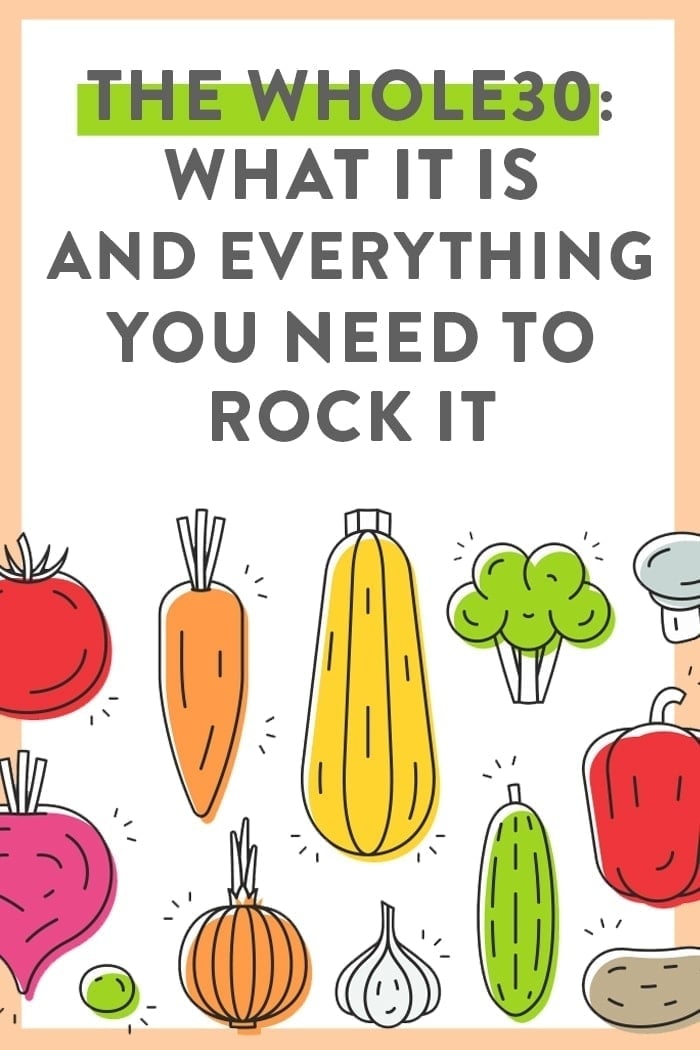
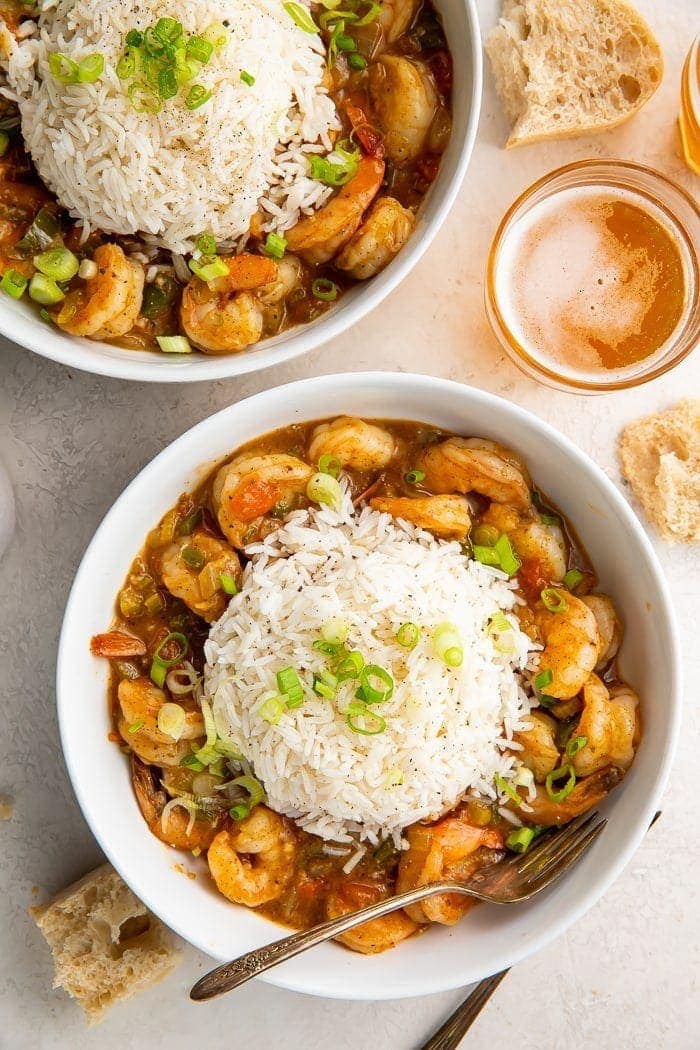

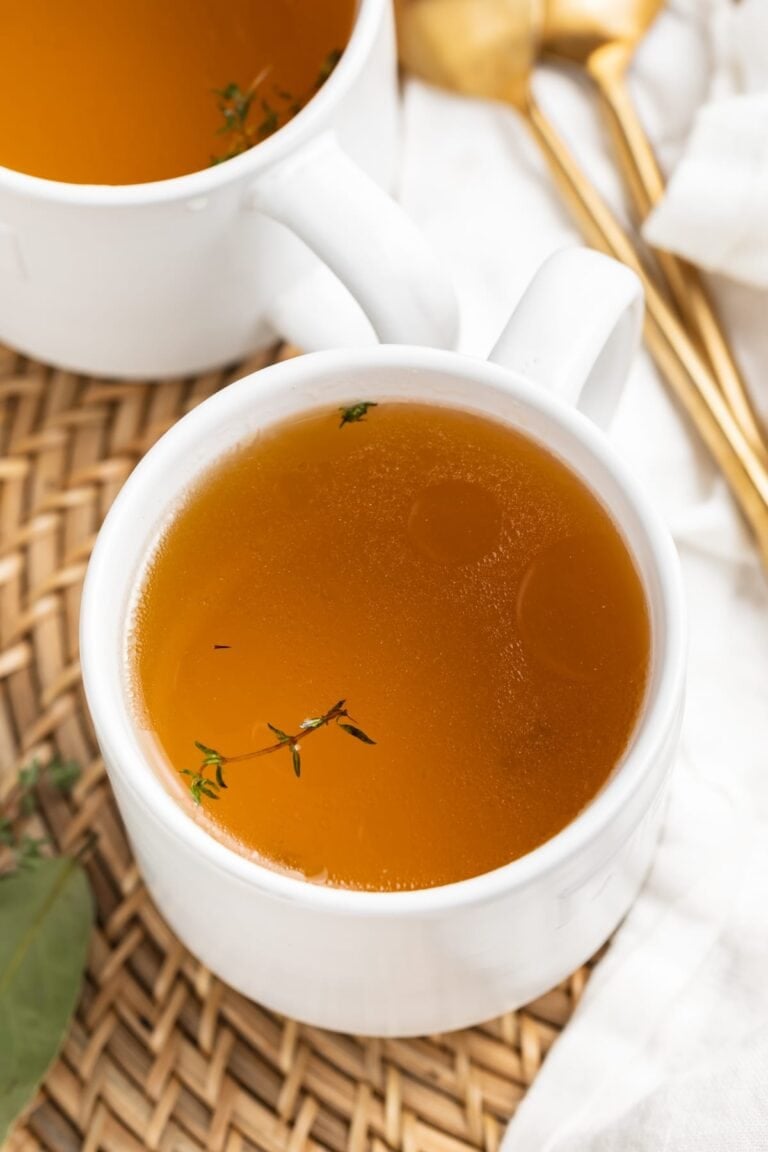
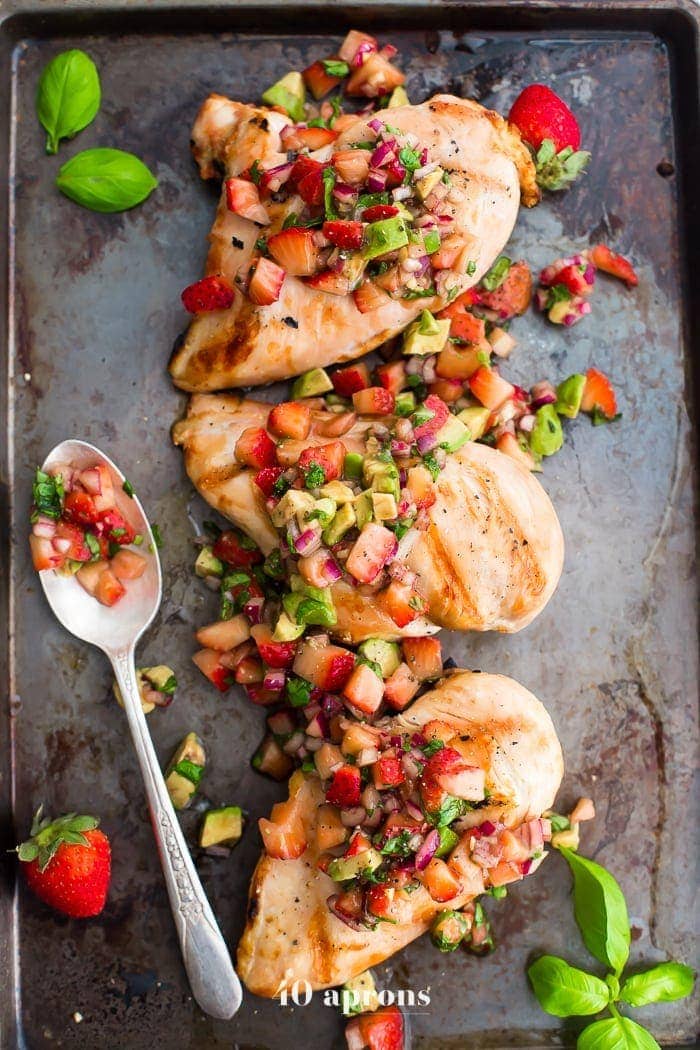
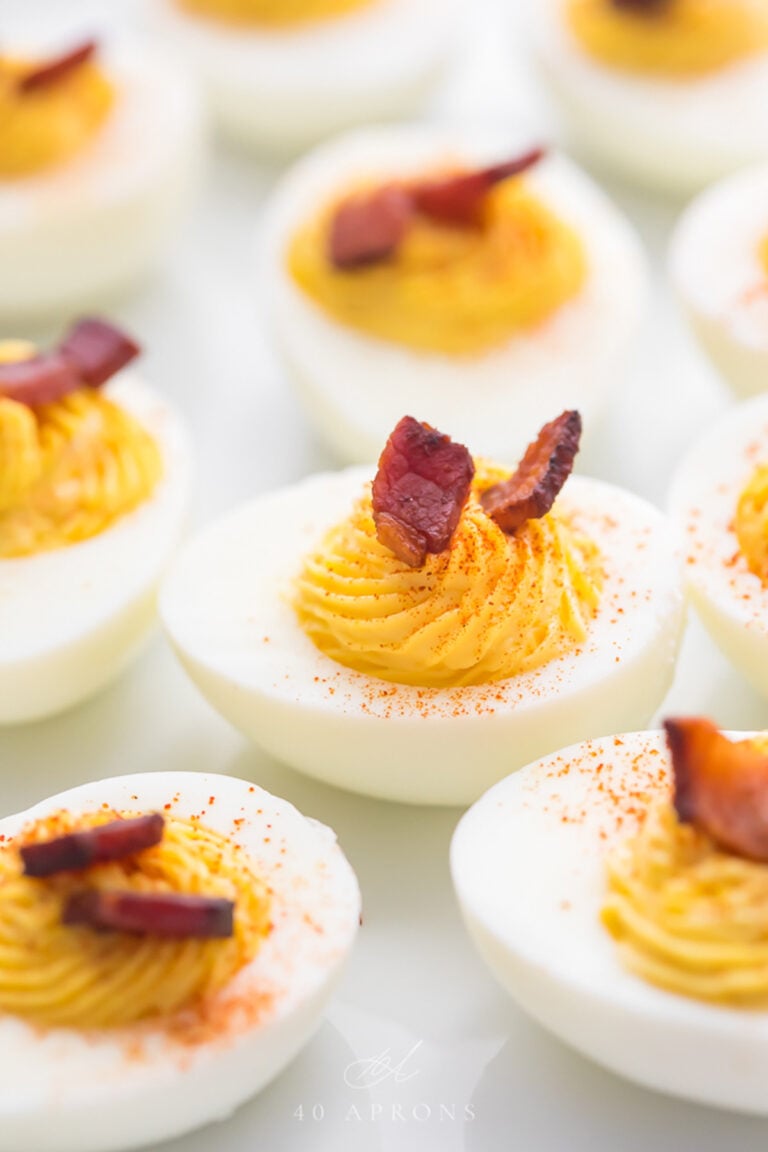
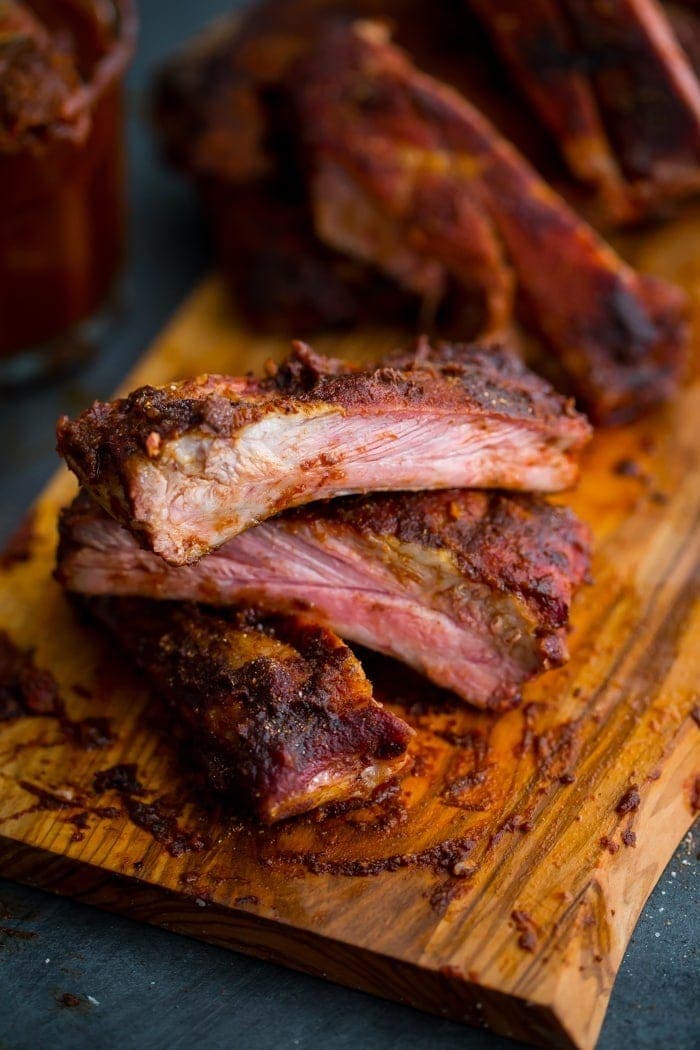










Never Miss A Meal!
New Recipes Straight To Your Inbox
A curated selection of our most recent recipes, delivered straight to your inbox once a week.
Thank you!
You have successfully joined our subscriber list.